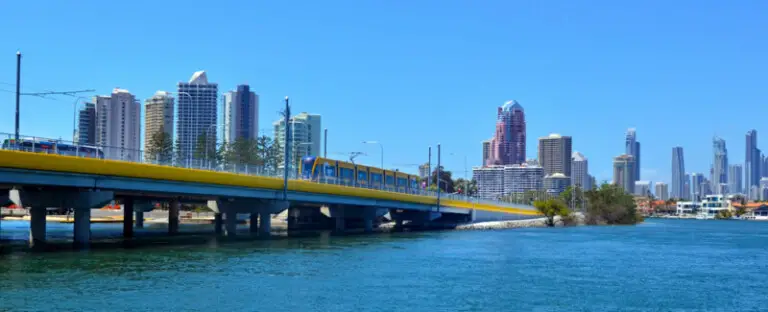Queensland Premier, Annastacia Palaszczuk officially received the brand new trams for Australia’s Gold Coast Light Rail Stage 3. Before transportation of the trams to the Port of Brisbane, five new light rail vehicles embarked on the journey to the Gold Coast by sea. Thereafter, they were delivered down to the M1 via a 76-wheel trailer.
The new trams will be used during the light rail to Broadbeach to Burleigh Heads’ extension. However, way before joining the current and operational fleet, the trams will undergo various forms of testing. The tests will be done at the Southport depot.
Australia’s Gold Coast Light Rail is a result of a partnership with the City of Gold Coast and the Federal Government. Quite impressively, Annastacia Palaszczuk noted that the total Light Rail fleet for the $1.2 billion project, alongside pre-existing trams will accelerate to 23.
Read Also: Australia’s Cross River Rail Project’s Significant Milestone Progress
Australia’s Gold Coast Light Rail Stage 3 completion date
By 2024, the Australia’s Gold Coast Light Rail Stage 3 targets to begin track laying and complete works in 2025. The trams feature enhanced accessibility elements, that make them more accessible and inclusive. These include elements such as braille signs, as well as double-accessible spaces. Alongside, 20 priority seats on every train. Additionally, the project has shifted vertical handrails to create a wider passageway for prams, wheelchairs, walkers, and additional mobility aids.
Within the state of Queensland, the Light Rail is the only mode of public transport. According to a press statement, it surpasses 73 million paid passenger trips since opening to the public in 2014. Moreover, the integrated and intricate network often helps in connecting residents to one of the region’s most fastest-growing cities. In regards to employment opportunities, the megaproject will directly support over 760 local jobs. Mark Bailey, Queensland Transport and Main Roads Minister said that the development aims to demonstrate the State Government’s continued investment, especially towards expanding public transport services.

